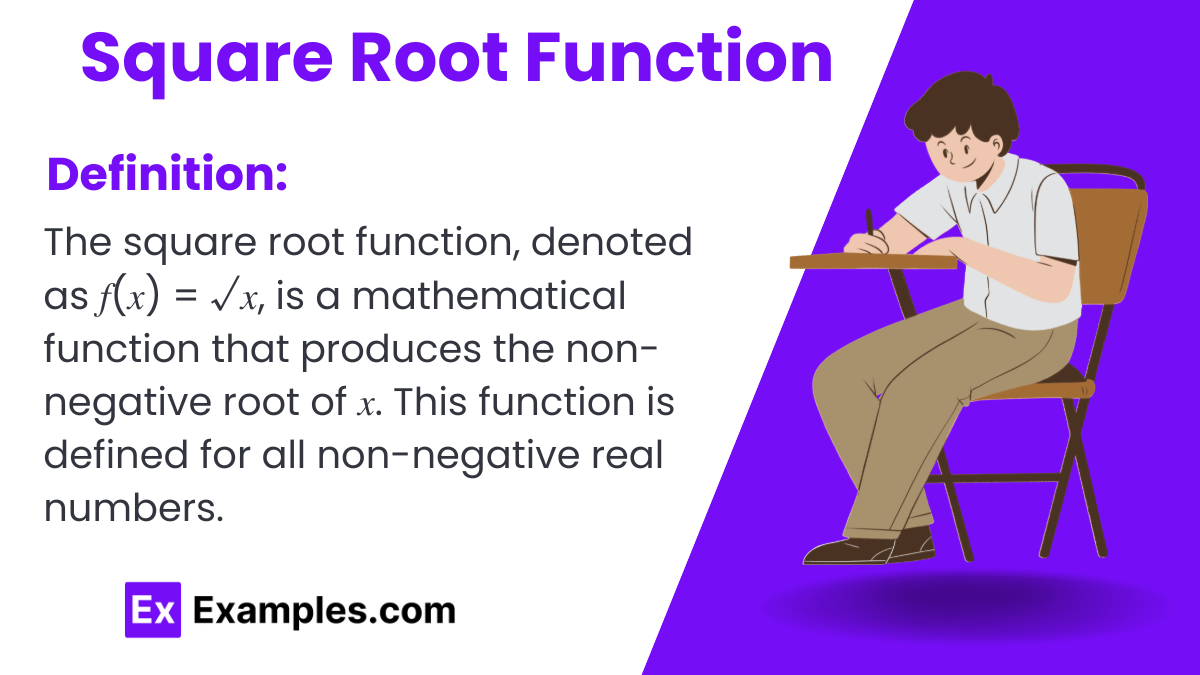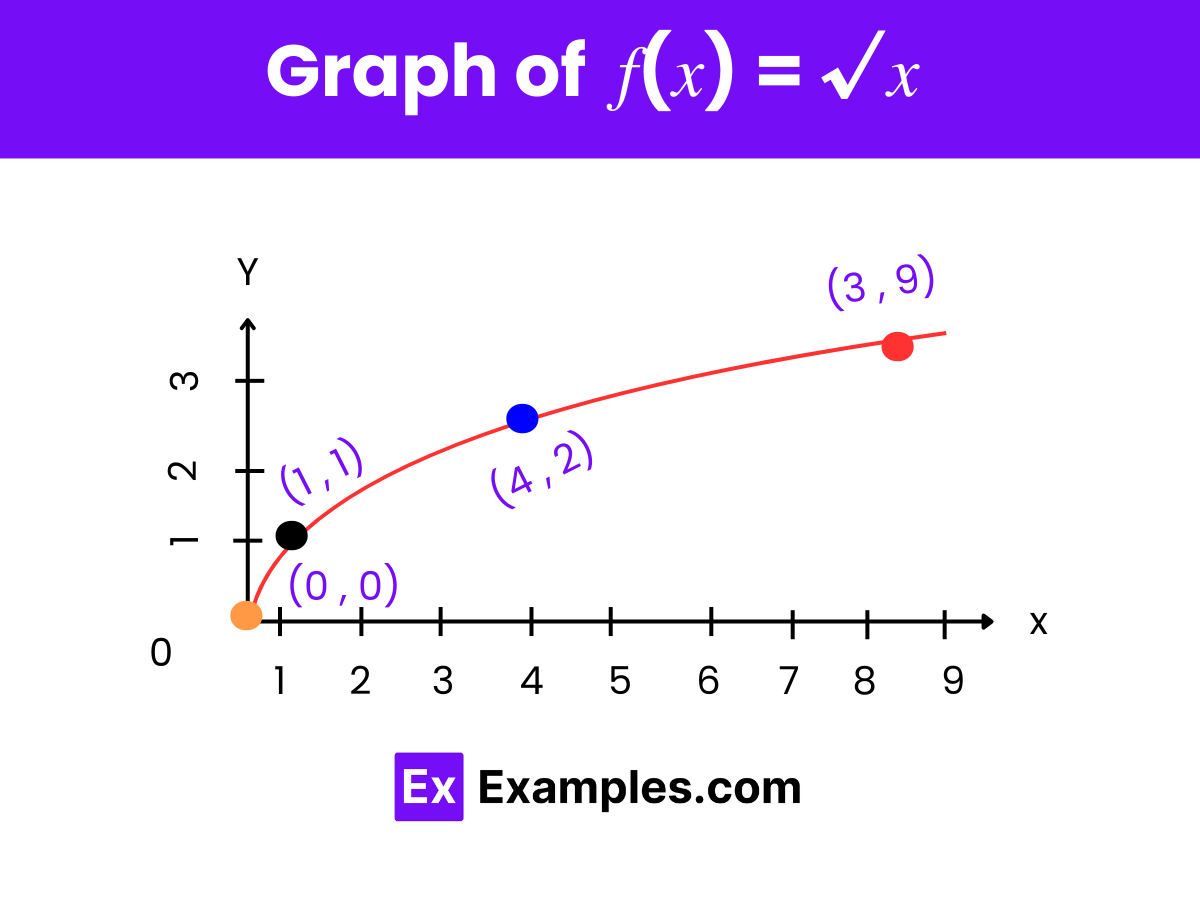What is the square root of 16?
2
3
4
5


The Square Root Function, denoted as 𝑓(𝑥) = √𝑥, is a fundamental concept in algebra that assigns to each non-negative number 𝑥 its non-negative square root. This function intersects various mathematical domains, handling both rational and irrational numbers, as it maps each squared integer or real number back to its original form. In statistical contexts, such as regression analysis, the square and square root function can be employed to transform data, optimizing the application of the least squares method. This transformation is crucial fogr normalizing datasets and reducing skewness, enhancing the accuracy of statistical models and numerical predictions.

To visualize the square root function 𝑓(𝑥) = √𝑥, it’s helpful to see its values tabulated alongside the input values. Here’s a table showing selected values for 𝑥 and the corresponding 𝑓(𝑥) values:
| x (Input) | 𝑓(𝑥) = √𝑥 (Output) |
|---|---|
| 0 | √0 = 0 |
| 1 | √1 = 1 |
| 4 | √4 = 2 |
| 9 | √9 = 3 |

These properties provide a deeper understanding of the square root function, demonstrating its fundamental role in mathematics and its utility in various theoretical and practical applications.
Problem: Suppose you have a square plot of land with an area of 625 square meters. What is the length of each side of the square?
Solution:
Problem: An alternating current (AC) electrical circuit has a peak voltage of 120 volts. Calculate the root mean square (RMS) voltage, which is the effective voltage of the AC circuit.
Solution:
In statistics, the square root transformation is often applied to data to stabilize variance and normalize distributions, particularly in data sets skewed by large outliers. This transformation can make patterns more apparent and data analysis techniques more effective.
Yes, the graph of the square root function is a curve that starts at the origin (0,0) and gradually increases. It forms half of a parabola that has been rotated 90 degrees counterclockwise. This curve is always increasing but does so at a decreasing rate as 𝑥 increases.
The standard square root function is defined only for non-negative numbers because the square root of a negative number is not a real number; it is an imaginary number. This limitation ensures that the function remains applicable and meaningful in real-world scenarios without the need for complex number calculations.
Text prompt
Add Tone
10 Examples of Public speaking
20 Examples of Gas lighting
What is the square root of 16?
2
3
4
5
Find the square root of 25.
3
4
5
6
What is the approximate square root of 30?
5.40
5.50
5.60
5.70
Calculate the square root of 36.
5
6
7
8
What is the square root of 49?
7
8
9
10
Find the square root of 64.
7
8
9
10
What is the approximate square root of 80?
8.80
8.90
9.00
9.10
Calculate the square root of 81.
8
9
10
11
What is the square root of 100?
9
10
11
12
Find the square root of 121.
11
12
13
14
Before you leave, take our quick quiz to enhance your learning!

